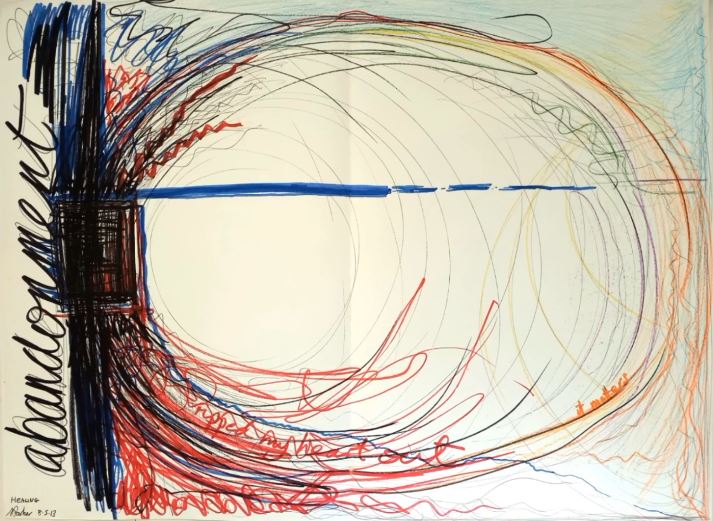Art Therapy – Sharon’s Experience

My Introduction to Art Therapy
I haven’t always been into art therapy. Growing up I was more into music, so when I started out in art therapy I didn’t have much confidence in my artistic skills. But art therapy isn’t about skills or talent, so anyone can try it.
I first did art therapy as a group activity in hospital eating disorders programme way back in 2003. I loved it so much that I started individual therapy when I could and when I could was just a few years later when I was able to access affordable subsidised sessions. So then I went then on average every month for quite a while and in the past year I’ve been able to start again with NDIS funding.
How does art therapy help?
There’s lots of things that help and that I love about art therapy. I love that art making is a calming and very in the moment type of activity.
I love the way that creating an image can express what I’m feeling and what’s going on for me, sometimes in surprising ways.

It helps bring me insights about myself and sometimes even answers that show me the way forwards in life.
I love that creating an image can be an adventure. I often start and have no plan for how it’s going to go. Like in this image (to the left), a pencil drawing where I just started with the curved line that felt right and drew the next curve and kept adding even the squiggles down the bottom. I don’t know if it means much but it felt good.
I love that art as therapy frees me up to just create without the pressure of thinking that I’m trying to create something fabulous for all the world to see. Because art therapy is about me and my expressive process and about sharing that with the art therapist.
I also love that sharing the process with an art therapist is a way to connect and be heard without needing to use a whole heap of words. When I started art therapy I felt a huge sense of relief because it wasn’t all talking like in conventional talk therapies. They’re great too, and I do personally see a psychologist also. But my brain can grow tired of how cerebral and word intensive talk therapies often are.
So I love that in art therapy I can express visually what I might struggle to give words to, or even things that I’ve never had words for, because I find that art taps into an intuitive knowledge of myself.
What benefits have I experienced?
Better creative self expression
Greater understanding of myself
Strategies for things I’m dealing with
Better self acceptance to reducing my judgement and self criticism
A boosted positive sense of self from a simple act of creating something arty
Good connection from feeling seen by a caring human being, the art therapist
Also, it feels great to just get out the emotional energy that I have inside, like when I created this image that I titled Healing to capture the intense feeling of abandonment, but also to capture a sense of time of moving on from the intensity into some kind of healing.

Inside an Art Therapy Session
With my first art therapist, I would do some art for 20 to 30 minutes using any of the art materials in the room, and we would talk before and after that. With my current art therapist, we talk for most of the session and then have 5 to 10 minutes of artie time and artie task that she sets. It’s an online appointment, so I use my own art materials at home and she encourages me to continue art making between sessions.
Challenges I Faced with Art Therapy
I think the main challenge is to let yourself be expressive, to tap into creativity, and to not be overly critical or judgmental of yourself. It helps to keep in mind that you’re not there to create a masterpiece, that it’s more about the process than the outcome. It’s so valuable just to be in the moment and let your thoughts and feelings connect to what you’re creating.
Why I Recommend Art Therapy to Others
Because I think anyone and everyone could benefit from art therapy. Everyone can improve on their creativity and use art for self expression. However, I do think art therapy can especially help people who have visual learners like me who think and process things visually, as well as people who have difficulty with speaking their thoughts and feelings for whatever reason.
I truly think it’s fabulous, so if you’re thinking about it, I’d say give it a try.
Final Thoughts and What to Keep in Mind
Different art therapists can work quite differently, so if you aren’t happy with the experience, it’s worth trying another art therapist or asking for a different approach.
Finding North’s Real Stories series shares individual experiences and personal perspectives. Please remember that not every therapy or treatment is right for everyone. We encourage you to speak with your healthcare team to explore what approaches may work best for you. To view the video recording of Sharon’s experience with art therapy, visit our Art Therapy page.